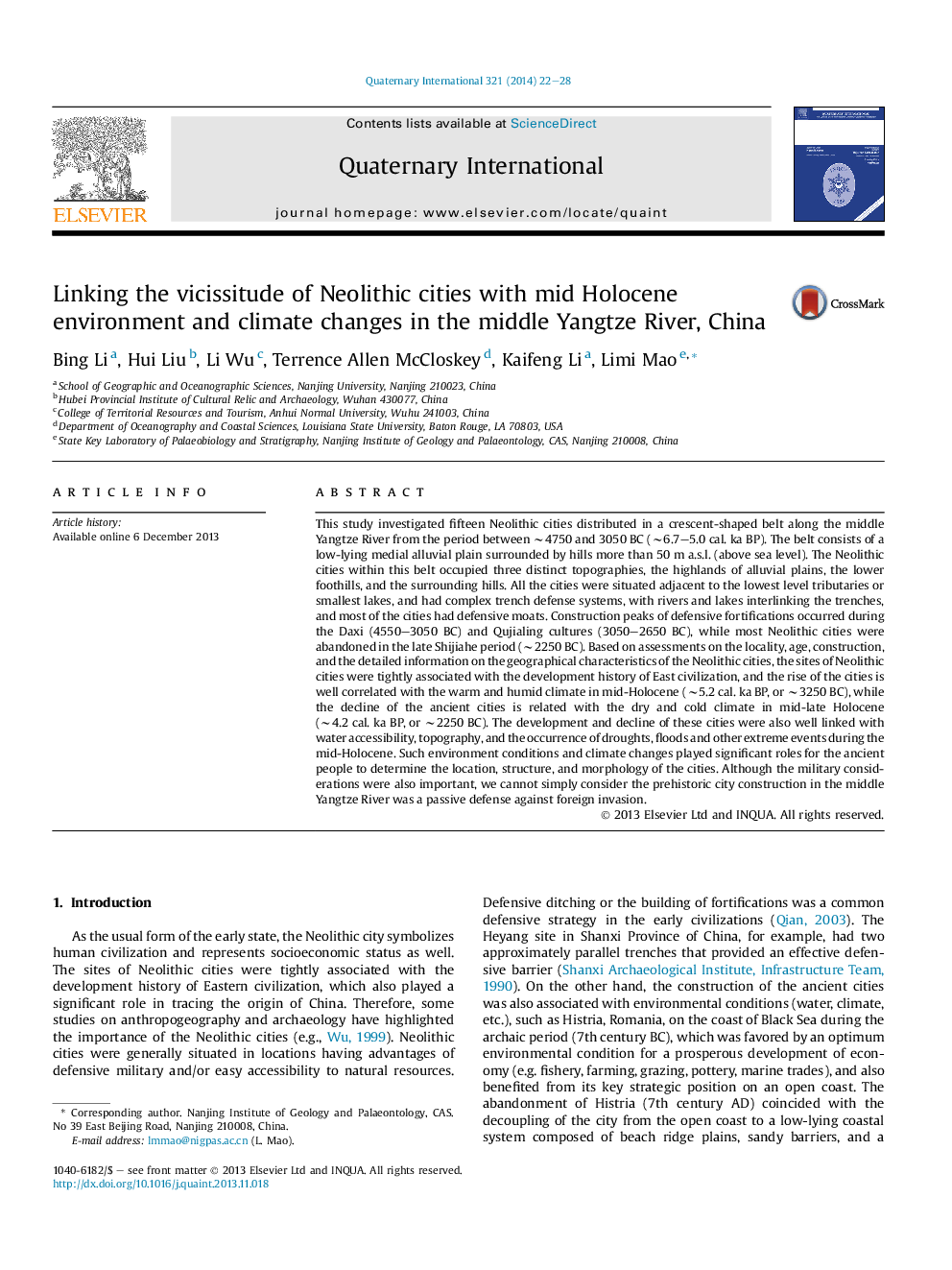| Article ID | Journal | Published Year | Pages | File Type |
|---|---|---|---|---|
| 1041659 | Quaternary International | 2014 | 7 Pages |
This study investigated fifteen Neolithic cities distributed in a crescent-shaped belt along the middle Yangtze River from the period between ∼4750 and 3050 BC (∼6.7–5.0 cal. ka BP). The belt consists of a low-lying medial alluvial plain surrounded by hills more than 50 m a.s.l. (above sea level). The Neolithic cities within this belt occupied three distinct topographies, the highlands of alluvial plains, the lower foothills, and the surrounding hills. All the cities were situated adjacent to the lowest level tributaries or smallest lakes, and had complex trench defense systems, with rivers and lakes interlinking the trenches, and most of the cities had defensive moats. Construction peaks of defensive fortifications occurred during the Daxi (4550–3050 BC) and Qujialing cultures (3050–2650 BC), while most Neolithic cities were abandoned in the late Shijiahe period (∼2250 BC). Based on assessments on the locality, age, construction, and the detailed information on the geographical characteristics of the Neolithic cities, the sites of Neolithic cities were tightly associated with the development history of East civilization, and the rise of the cities is well correlated with the warm and humid climate in mid-Holocene (∼5.2 cal. ka BP, or ∼3250 BC), while the decline of the ancient cities is related with the dry and cold climate in mid-late Holocene (∼4.2 cal. ka BP, or ∼2250 BC). The development and decline of these cities were also well linked with water accessibility, topography, and the occurrence of droughts, floods and other extreme events during the mid-Holocene. Such environment conditions and climate changes played significant roles for the ancient people to determine the location, structure, and morphology of the cities. Although the military considerations were also important, we cannot simply consider the prehistoric city construction in the middle Yangtze River was a passive defense against foreign invasion.
